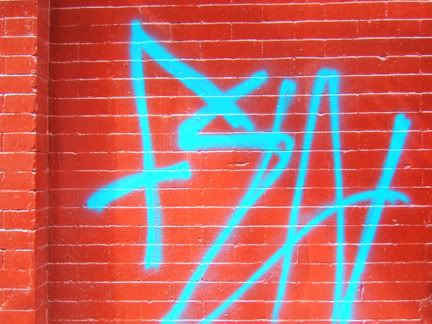
I don't remember when I picked up Counter Intelligence: Where to Eat in the Real Los Angeles . I think I bought it as a gift, and doubled back to the bookstore a few weeks later to pick one up for myself. Or maybe I gave away my first copy, edges slightly tattered from months (years?) of riding in the passenger's door pocket of my Honda Civic (truly, the only book I've ever granted permanent status in my vehicle), to a new friend, who also happened to be a new Angeleno. Revise that. Not the permanent status part. Same new friend, who was new. I drove to three different bookstores between La Cienega and Third Street Promenade to track down a fresh, new copy of Counter Intelligence: Where to Eat in the Real Los Angeles to give to her for a gift exchange around the holidays. Several years after it was first published, Gold's book was sold out at two of three Border's locations.
I'm not even sure how I found Gold: book or column (of the same name), and which inspired a devoted allegiance to the other? But as two visual memories stand out sharply against the rest, I'm hedging my bests that I first saw, and bought, Counter Intelligence, the book, in the UCLA bookstore, shortly after it was published because I can remember what it looked like on display there. And I'll hedge my bets that I first read Gold (at least, with any association of him being Gold), when I first opened the book to the first page of the introduction, because the second starkly visual image I can see now in my mind is of Pico Boulevard, that vast Los Angeles artery, stretching from the Westside towards downtown, neighborhoods changing, languages changing, and a few things remaining essentially the same: the sense of community, and the food.
In the introduction, Gold looks back to his pre-Weekly days, when he was a young copywriter (editor?) at a downtown newspaper. He describes driving down Pico Boulevard, his wonder at the many varied cultures. And he describes the monumentous task he set for himself: I decided I was going to eat my way down Pico Boulevard.
And so he did. Little did Gold know where Pico Boulevard would take him. He transferred to a job at the L.A. Weekly, and, a couple of years later, the debut of his weekly food column, “Counter Intelligence.” Now, twenty years later, the first Pulitzer Prize ever awarded a food critic. And with good reason. To pull from two examples the Pulitzer committee has posted of his ’06 columns, Gold is equally at home chasing down his favorite taco truck for the ephermial ecstasy of a couple of tacos al carbon as he is a $120 kobe steak at Wolfgang Puck’s white-on-white-on-white minimalist venture at The Regent Beverly Wilshire (yes, the Pretty Woman hotel). The brilliance of his writing is, yes, he always gets around to talking about the food in critic-terms—and it’s some of the most spot-on food writing you’ll ever read—but his columns are woven with stories of cultures and traditions and Los Angeles nostalgia and travel, all within the one address on Pico Boulevard.
I always knew you were good.


